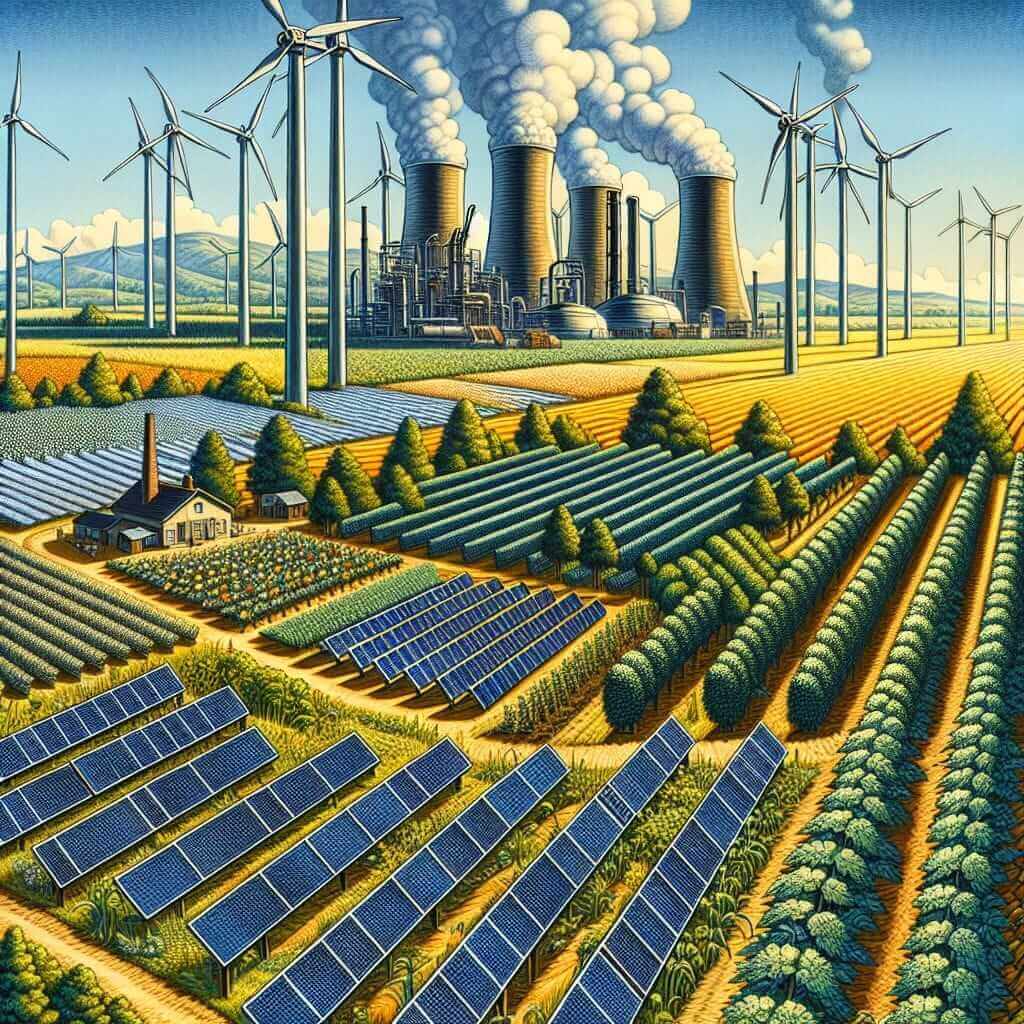The IELTS Reading section is designed to test a range of reading skills, from understanding the gist of a text to identifying specific details, recognizing opinions, attitudes, and purposes, as well as following the development of an argument. One of the topics that may appear is the impact of renewable energy on rural electrification—a subject of growing importance given today’s global emphasis on sustainable energy solutions. Tracking past IELTS papers, the topic aligns with the test’s frequent inclusion of environmental and scientific themes, making it a plausible candidate for future exams.
IELTS Reading Practice: Renewable Energy and Rural Electrification
Sample Reading Passage
Read the following passage carefully and answer the questions that follow:
Renewable Energy and Rural Electrification
Rural electrification remains one of the paramount challenges in developing countries. The advent of renewable energy technologies offers a promising avenue to address this issue. In regions where extending the grid is economically unviable, decentralized renewable energy sources such as solar, wind, and biomass are proving to be effective alternatives.
Solar Power: A Beguiling Solution
Solar energy, harnessed through photovoltaic (PV) panels, has become a key player in rural electrification. These panels convert sunlight directly into electricity and can be installed on a small scale, providing household-level power independent of a centralized grid. Solar power is particularly viable in sunny, rural areas where traditional grid expansion is impractical.
The Role of Wind Energy
Wind turbines are another renewable resource being utilized in rural electrification schemes. Suitable primarily for areas with consistent wind patterns, these installations can generate significant amounts of electricity. Community-scale wind projects often involve the establishment of microgrids that supply energy to multiple households.
Biomass: An Underutilized Resource
Biomass energy, derived from organic materials such as agricultural waste and firewood, holds considerable potential. In many rural communities, biomass is already used for cooking and heating. Modern biomass technologies can convert this resource into electricity, providing a sustainable energy source that utilizes local agricultural byproducts.
Challenges and Solutions
Despite the potential benefits, the implementation of renewable energy in rural electrification faces several challenges. Initial costs can be prohibitive, and there is often a lack of technical expertise for installation and maintenance. However, with the falling costs of renewable technologies and the increasing initiatives for capacity building, these barriers are gradually being overcome.

Questions
-
Multiple Choice:
What is the main reason for using solar energy in rural areas?
- A) It’s cheaper than wind energy.
- B) It can be installed on a small scale.
- C) It requires no maintenance.
- D) It is less affected by weather patterns.
-
True/False/Not Given:
Wind energy is viable in all rural areas.
- A) True
- B) False
- C) Not Given
-
Matching Information:
Match the renewable energy source with its description:
- Solar Power
- Wind Energy
- Biomass
Descriptions:
- Requires consistent wind patterns.
- Converts sunlight into electricity.
- Utilizes agricultural waste for energy.
-
Summary Completion:
Complete the summary using words from the passage.
“In regions where extending the grid is not feasible, decentralized renewable energy sources are becoming an effective solution. Solar and wind energy can be deployed on a small scale, while modern biomass technologies convert organic materials into _____ for rural communities.”
Answer Key
-
Multiple Choice:
- B) It can be installed on a small scale.
- Explanation: The passage states that solar panels can be installed on a small scale, providing household-level power independent of a centralized grid.
- B) It can be installed on a small scale.
-
True/False/Not Given:
- B) False
- Explanation: The passage mentions that wind turbines are suitable primarily for areas with consistent wind patterns, implying they are not viable in all rural areas.
- B) False
-
Matching Information:
- Solar Power – 2
- Wind Energy – 1
- Biomass – 3
-
Summary Completion:
- electricity
- Explanation: The passage references modern biomass technologies converting organic materials into electricity for rural communities.
- electricity
Common Mistakes and Tips
When tackling this type of reading passage, be aware of these common pitfalls:
- Overlooking Key Details: Always pay attention to specific information that may be crucial for answering the questions accurately.
- Misinterpreting Information: Take care to understand exactly what is being asked in each question.
- Time Management: Practice pacing to ensure that you can complete all questions in the allotted time.
Vocabulary
Here are some vocabulary items from the passage:
- Paramount (adj) /ˈparəmaʊnt/: more important than anything else.
- Harness (v) /ˈhɑr.nɪs/: to control and make use of (natural resources), especially to produce energy.
- Photovoltaic (PV) panels (noun): solar panels that convert sunlight directly into electricity.
- Microgrids (noun): local energy grids that can operate independently of the traditional grid.
- Prohibitive (adj) /prəˈhɪbətɪv/: excessively high; difficult for most people to afford.
Grammar Insight
Pay attention to the use of relative clauses, such as:
- “Solar energy, harnessed through photovoltaic (PV) panels, has become a key player in rural electrification.”
Relative clauses provide additional information about a noun without starting a new sentence. Practice identifying and creating sentences with relative clauses to enhance your writing skills.
Advice for High IELTS Reading Scores
To excel in the IELTS Reading section:
- Consistent Practice: Regularly practice reading a variety of texts with varying difficulty levels.
- Enhance Vocabulary: Build a robust vocabulary to understand and interpret texts easily.
- Develop Skimming and Scanning Skills: These techniques can help you locate key information quickly.
- Analyze Mistakes: Review your answers to understand your mistakes and learn from them.
Remember, quality practice with authentic materials is the key to improving your IELTS Reading score. Good luck!